The First Person to Die in Space: The Story of Vladimir Komarov
17th Feb 2024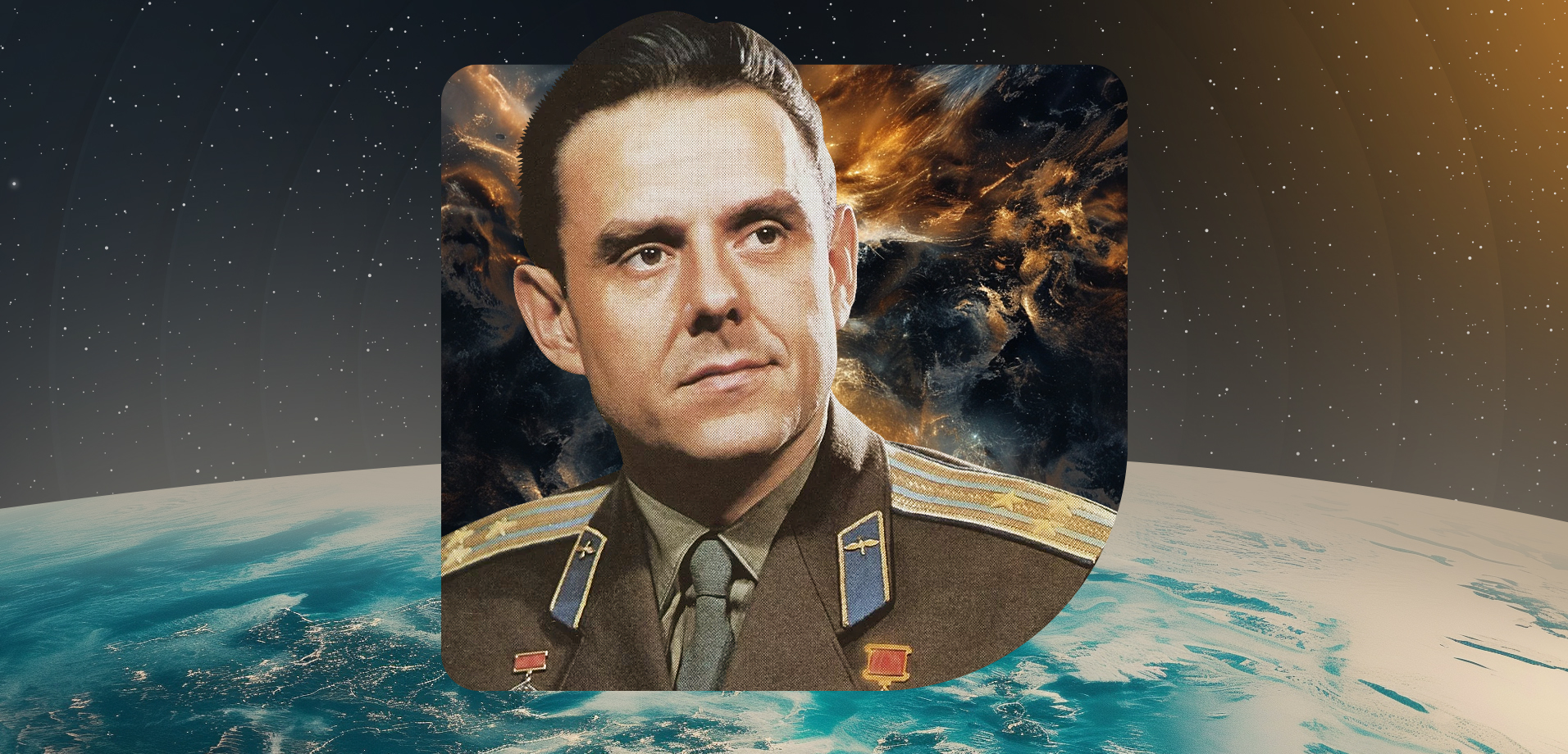
The space race of the 20th century brought mankind many outstanding achievements, but it also had a dark side. Eager to get ahead of the competition, countries were in a hurry and, therefore, often made mistakes. Some of these mistakes were unfortunately fatal. In this article, we tell you the story of Vladimir Komarov, pilot-cosmonaut No. 7, twice Hero of the Soviet Union, the first person who has been in space twice and the first person to die in space…
Diligent Path to Space
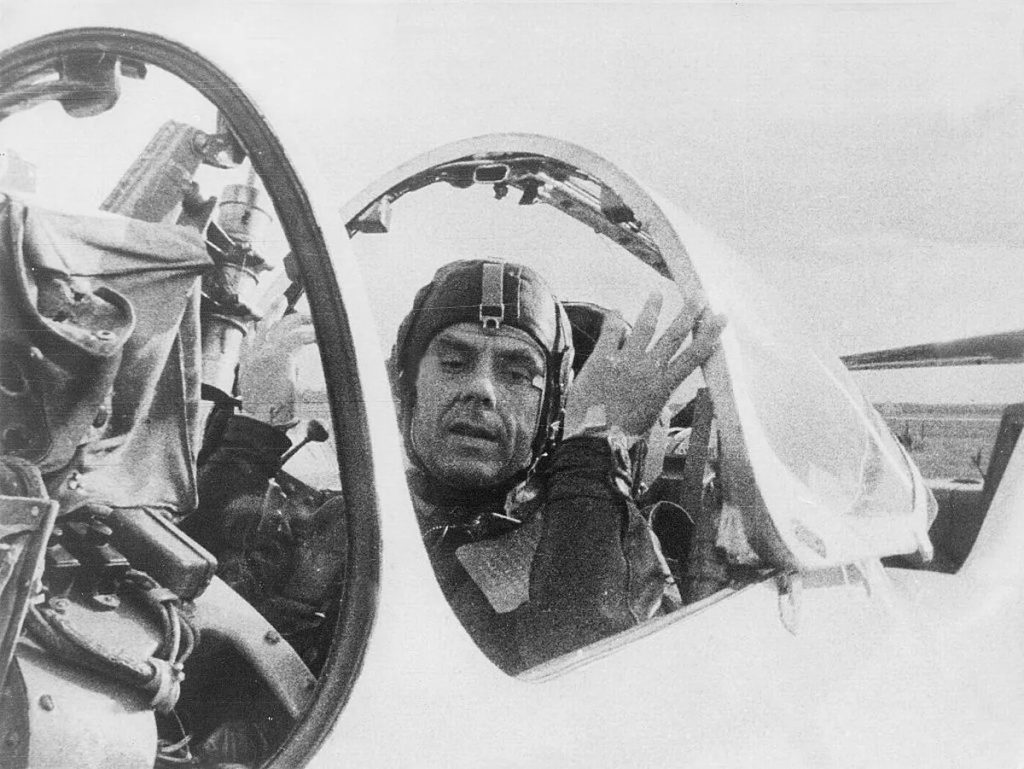
Vladimir Komarov set on the path to space at the age of 16 at a special Air Force school. It was 1943, the height of World War II, and Komarov, like all young men of his age, was eager to go to the front. Later, there was a military school and five years of service as a fighter pilot in the Caucasus and Ukraine. In 1959, he mastered the profession of an aviation engineer and got a job at the State Air Force Research Institute, where he was involved in testing fighters and designing the future Voskhod and Vostok spacecraft. At the time, Vladimir did not know that he would have to fly on one of these spacecraft.
In 1960, a special commission arrived at the institute and invited the promising employee to take part in the secret space program. This is how Vladimir Komarov ended up in the first Soviet cosmonaut corps.
Voskhod-1: First Flight into Space
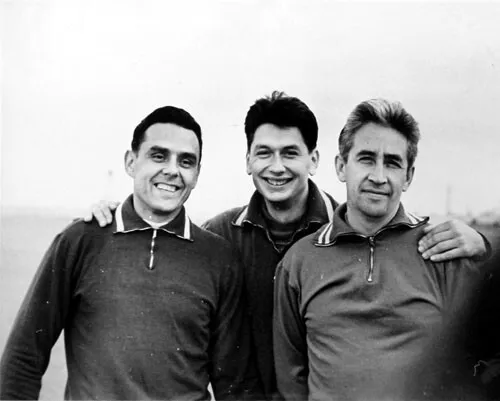
After Gagarin’s legendary flight into Earth’s orbit in 1961, Nikita Khrushchev, head of the USSR at the time, started to demand new space achievements from Soviet rocket engineers. Every three months, he asked the chief designer Sergei Korolev the same question: “What’s our next surprise?”
In 1962, the US President Kennedy announced the start of the Apollo lunar program, and the Soviets had to prove, at all costs, that they were still the space leaders. So, the decision was made to fly an entire crew of astronauts into space.
However, the problem was that the Russians simply did not have a ship for this purpose. They took Gagarin’s Vostok-1 ship, renamed it into Voskhod-1, and squeezed three people into the small cabin instead of one. Komarov was appointed mission commander and pilot. To save space in the cabin, the catapults were removed, and the astronauts flew in light training suits instead of proper spacesuits. If an accident or other emergency situation had occurred, each of them could have become the first man to die in space. But that time, this worked.
On October 12, 1964, Voskhod 1 launched from the Baikonur spaceport in Kazakhstan. The flight lasted 24 hours, after which the astronauts returned to Earth without a single scratch. It is curious that while they were in space, the USSR’s leader changed. The cosmonauts who flew out under Nikita Khrushchev reported their success to Leonid Brezhnev.
Soyuz-1: Fatal Flight
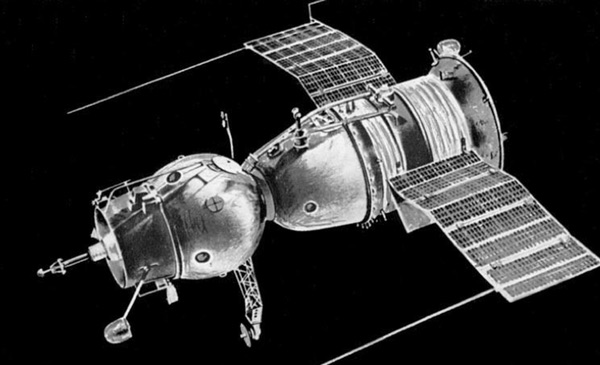
Korolev was well aware that Voskhod would not be able to compete with the American Apollo, so his team began work on a fundamentally new three-seat spacecraft, Soyuz. Jumping ahead, let’s say that the Soyuz design turned out to be successful, and their modified versions are still in use. Unfortunately, Korolev died tragically in 1966 during an emergency operation, and this greatly complicated the work on the project. Three unmanned launches of the Soyuz were partially or completely unsuccessful; the ship had more than 200 defects, but the Soviet authorities decided on a manned launch — falling behind in the “lunar race” was unacceptable.
Two ships were supposed to launch on this mission — Soyuz-1 and Soyuz-2, and their main task was to dock in orbit. Komarov was supposed to fly on the first ship, and Yuri Gagarin was appointed as his backup. The cosmonauts were good friends, and Gagarin saw Komarov off on that ill-fated day. Together, they took the elevator to the top platform of the service farm, and when the hatch closed behind his friend, Gagarin shouted: “See you soon!” The meeting was not destined to happen. There were only a few hours left until the first death in space.
What Happened to Vladimir Komarov During the Soyuz-1 Flight?
Soyuz-1 launched from Baikonur on April 23, 1967, exactly at the appointed time. After 6 minutes, the MCC reported that the ship had separated and entered the satellite’s orbit. But things were just getting started…
One of the ship’s two solar panels got caught on the screen-vacuum thermal insulation and failed to open. Some devices could not turn on due to the lack of electric power.
After, the backup antenna of the telemetry system failed to open, and the visor protecting the solar-stellar sensor from engine exhaust did not open either. This meant that it was impossible to orient the ship in space relative to the sun. Implementing the joint flight program in such conditions was impossible. The launch of the second ship was cancelled, and the decision was made to land Soyuz-1 ahead of schedule.
Komarov was offered to carry out the manual orientation of the spacecraft on the light side of the Moon like he was flying an airplane. Then, before getting into the shadows of the dark side, to transfer control to the gyroscopes, although the astronauts did not practice this type of landing — it was invented by the Mission Control Center on the fly out of despair. An experienced and cold-blooded pilot, Komarov struggled for five hours and accomplished the almost impossible task: manually orient the Soyuz spacecraft and begin braking over the given area. The crew on Earth had a sigh of relief. But, alas, Komarov was destined to become the first man to die in space.
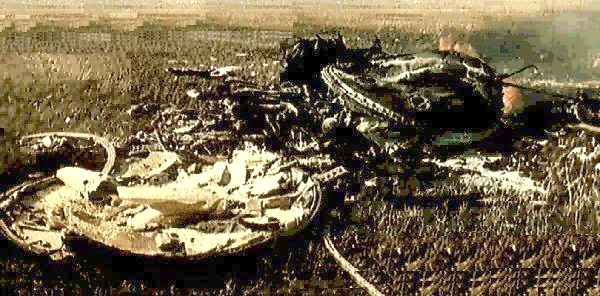
At the estimated time of landing, a message from the landing site informed that the astronaut needed medical assistance (there was no signal rocket for the case of death). The rescue team that arrived at the scene discovered a terrible picture: the descent capsule had sunk half a meter into the ground. It burned like a torch, and local residents were shovelling ground to combat the fire.
How Did Komarov Die?
As the accident investigation showed, at an altitude of 7 kilometres, the pilot chute of the spacecraft failed to pull the main parachute out of the container (the force of 2.8 tons turned out to be insufficient due to the container deformation that resulted from a pressure drop).
Then, the reserve parachute was automatically activated; it came out successfully, but due to the spacecraft’s rotation, parachute lines twisted, so it wrapped around the pilot chute.
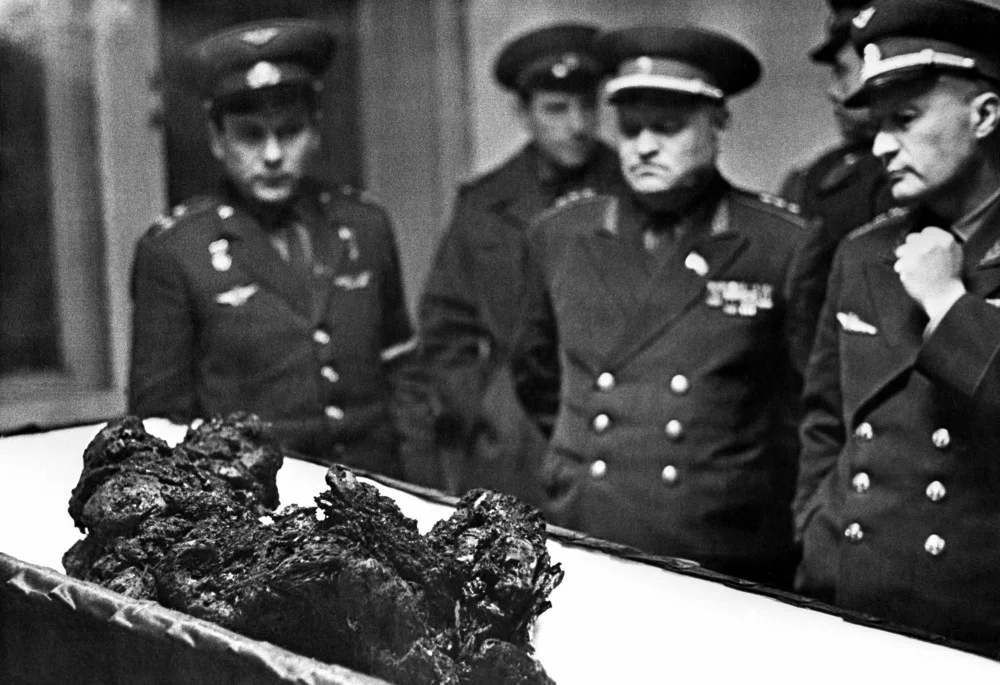
Did Vladimir Komarov die in space? No, not directly. He died upon landing. The ship crashed into the ground at a speed of about 80 m per second. The vehicle’s fuel tanks, filled with concentrated hydrogen peroxide, exploded, and Komarov was burned beyond recognition.
What Were Komarov’s Last Words?
Some sources claim that the astronaut, already realising that he would not survive, cursed the MCC employees and asked them to take care of his family. But according to the official audio record, preserved in the state archives, the astronaut’s last words were: “I’m in a chair, strapped down. I feel great, everything is fine. Thank you, tell everyone. Separation has taken place” (“separation of the descent capsule from the main ship” — author’s note).
Everything happened so quickly that Komarov probably did not even have the time to realise he was about to die. But we are unlikely to discover what really happened.
Gagarin Could Become the First Human to Die in Space
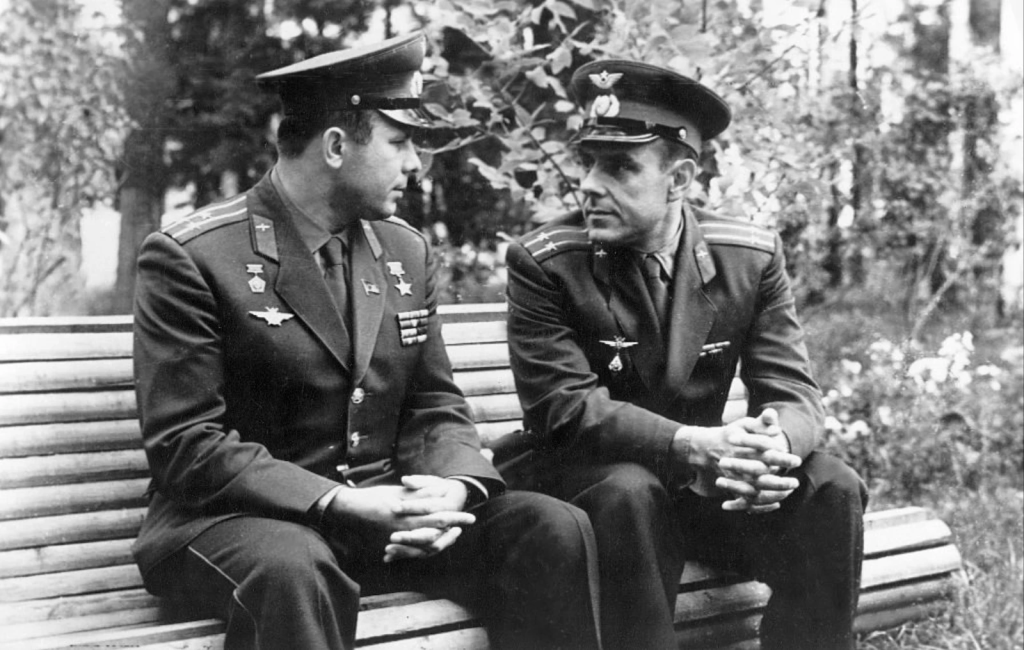
Sergei Korolev had firmly promised Gagarin a second mission on the new ship, so if he had been alive at the time of the Soyuz’s first flight, Gagarin would most likely have flown instead of Komarov and would have become the first man to die in space. But he died a year later while testing the MIG-15 jet fighter. Vasily Mishin, who replaced Korolev, really wanted to prove himself in a new position, so the Soyuz launch was deliberately rushed, and Komarov, as a pilot with more technical experience, was chosen for this challenging flight.
Rumour has it that Gagarin blamed himself for not taking advantage of his position to get to the Secretary General Brezhnev and delay the flight of the “raw” ship.
In Memory of the First Person to Die in Space
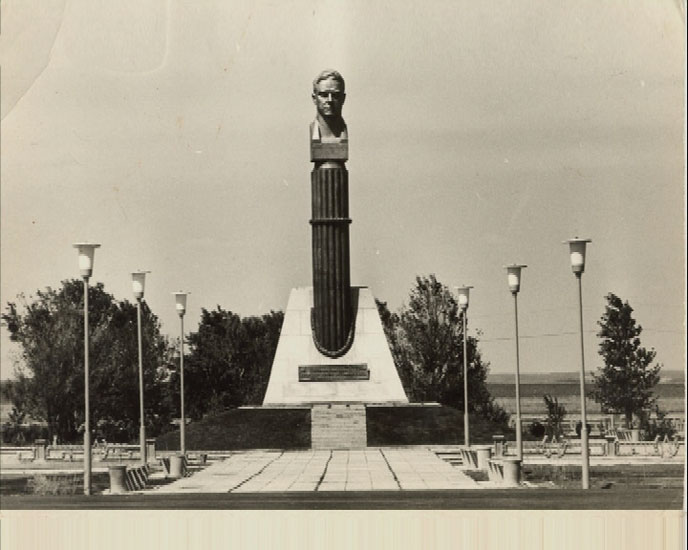
Vladimir Komarov’s remains were buried in Moscow near the Kremlin wall. But the family still believes that the place of his death in the Orenburg region is his real grave. A month and a half after the tragedy, the military staff from the rocket division, located nearby, installed a homemade obelisk at the crash site and planted several birch trees.
Trees do not grow well in the dry steppe, so a new custom arose: drivers passing by stopped and watered them from canisters. The official monument commemorating the first person to die in space appeared only 15 years later.
The death of Vladimir Komarov remains one of the greatest tragedies in the history of space exploration.
References and Additional Information:
- Fifty years later: Soyuz-1 revisited
https://www.thespacereview.com/article/3226/1 - Kamanin Diaries
https://web.archive.org/web/20160820192321/http://www.astronautix.com/k/kamanindiares.html - Vladimir Mikhaylovich Komarov Soviet cosmonaut
https://www.britannica.com/biography/Vladimir-Mikhaylovich-Komarov - Voskhod 1 – Multiple Seater
https://www.orbitalfocus.uk/Diaries/Voskhod/Komarov.php - An analysis of the Soyuz-1 flight
http://www.svengrahn.pp.se/histind/Soyuz1Land/Soyanaly.htm

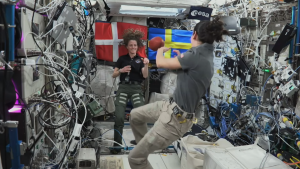




Thank you for your comment! It will be visible on the site after moderation.